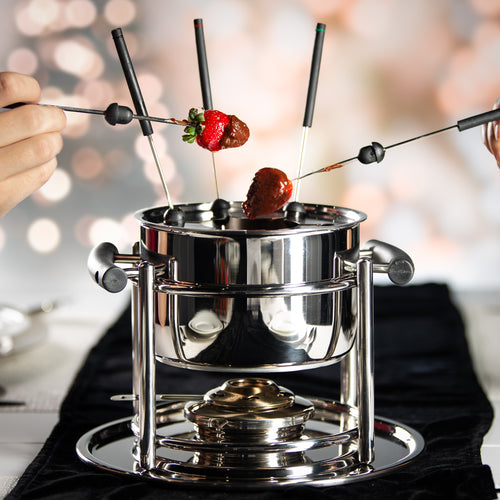Signs it's Time to Replace your Cookware

The lifespan of pots and pans really comes down to how well you take care of them, but sometimes despite your best effort and intentions, cookware begins to degrade. Depending on the type of damage it may be possible to recuse your pots and pans, but there are a few telltale signs that it is time to replace your cookware.
Warped Cookware
Regardless of the type of cookware you are using if your cookware is warped it is likely time to replace it. Pots and pans become warped when they quickly transition from high temperatures to low temperatures. To avoid this, it is best to allow your cookware to cool before beginning to wash or rinse it. Once your cookware is warped it does necessarily not pose any health risks, but it will cause the pan to heat unevenly. This directly affects the quality of your food and can be very frustrating. Sadly, once cookware is warped there is no way to fix it, thus it may be time to consider a replacement.
Broken or Compromised handle
A melted or loose handle may not seem like a big deal, but once the handle of a pot or pan is weakened it can be very dangerous. Breaking a handle while holding a pan can result in serious burns, not to mention the fact it means dropping your masterfully cooked meal on the ground. It is not worth the gamble, and if your handle is showing signs that isn’t sturdy it is time to replace your pot or pan. One way to avoid this type of wear is to buy cookware with metal handles, and be sure to use an appropriately sized flame for the pot or pan if you’re using a gas stove.
Scratched Non-stick Coating
Traditional non-stick cookware can be great as far as cooking and cleaning but is unforgiving; one slip up can make your non-stick cookware unsafe for use. In other words, it is difficult to rescue non-stick pots and pans from even the slightest negligence. If your non-stick pan is stained or has baked on filth that will not come off, try soaking it in white vinegar and water, but be careful not to scrub off the coating.
It is time to replace your non-stick cookware as soon as the coating becomes scratched or is flaking off. Not only do scratches and flakes reduce the non-stick capability of your pan, but can also come off onto your food. When the non-stick coating flakes off into your food not only is it unappetizing, but it can also pose serious health risks. Some non-stick pans release perfluorooctanoic acid, which has been linked to a number of tumours and has a toxic effect on your immune, liver and endocrine systems.
Worn Down Stainless Steel
Stainless steel cookware is much more resilient than non-stick but is more easily stained and tougher to clean. If your stainless cookware is stained, it is best to use a warm mixture of vinegar, baking soda, and water, and scrub away the burnt on food or stains.
Despite stainless steels resilience, it is time to replace your stainless pots and pans when the stainless layer is worn down to the point another material such as copper is shown.
What to consider when replacing your cookware
When replacing your cookware it is important to consider what could potentially go wrong. Avoid purchasing cookware with plastic handles to prevent them from melting, and be aware that if you buy cookware with any sort of coating, extra care will be needed when cooking to avoid chipping or scratching your pots and pans.
For the best of both worlds, consider our AL-P series, which incorporates a non-stick layer that is protected by raised 18/10 steel for the functionality of a non-stick cookware set, with the durability of a stainless steel set. It’s backed by a ten-year manufacturer warranty so you won't have to worry about replacing your cookware again for a long time.







0 comment